In retrospect, my decision to travel to Phongsali, one of the northernmost towns in Laos, was a highly masochistic tribute to the saying “The journey is the destination.”
Unlike Thailand, Laos is somewhat in the early stages of tourism, the infrastructure is still being built or expanded, and, as a result, visitors are mostly sticking to the same routes. Guide books funnel tourists coming into Laos from Chiang Khong in Thailand down the Mekong: an overcrowded two-day river experience that involves boarding a boat and drifting down south, alcohol included, to Luang Prabang, a former Lao royal capital. Since congregating with fellow travelers on a tiny boat during the day, and competing with them for overnight accommodation at predetermined stops was not particularly attractive to me, I decided to go north instead.
Northern Laos is significantly less visited by tourists, as I soon realized in Oudomxay, a bustling town that serves as the point of departure to Phongsali. During my two full days in Oudomxay, I saw few other falang (the Lao version of “farang”), and waited hopelessly for someone else to sign up for a promising cave tour in the area.
There is a lot of folklore about the bus from Oudomxay to Phongsali, and most of it follows the rules of a Checkhov drama: if a Phongsali bus appears in a story, it will break down in the third act. On the long, winding, high-altitude road through the jungle, something always seems to go wrong. Either significant delays, or the bus stops working (on some occasions more seriously than on others), or it gets into accidents, or it slides off the road. What is normally supposed to be an eight-hour trip almost always takes longer; how much longer—not even the drivers themselves know, it is all up to the gods of tin can buses in South East Asia.
My own journey to Phongsali began quite ominously. I got to the bus station before 7.30am—bus would leave at 8—only to discover that most of it was already full. The passengers were not around though. Everyone had made sure to reserve their seats by placing bags on them. Luckily I found a window seat on the back bench, one of the few remaining ones, and stuck to it, deciding that it is worth sacrificing breakfast for.
The driver and his helper were busy fixing luggage items to the roof—we had that much load. The bus itself was a relic with intriguing details from its heydays, such as numbered seats with white leather headrests, and thick window curtains. The only modern element was a set of loudspeakers mounted on the ceiling, blasting Lao pop.
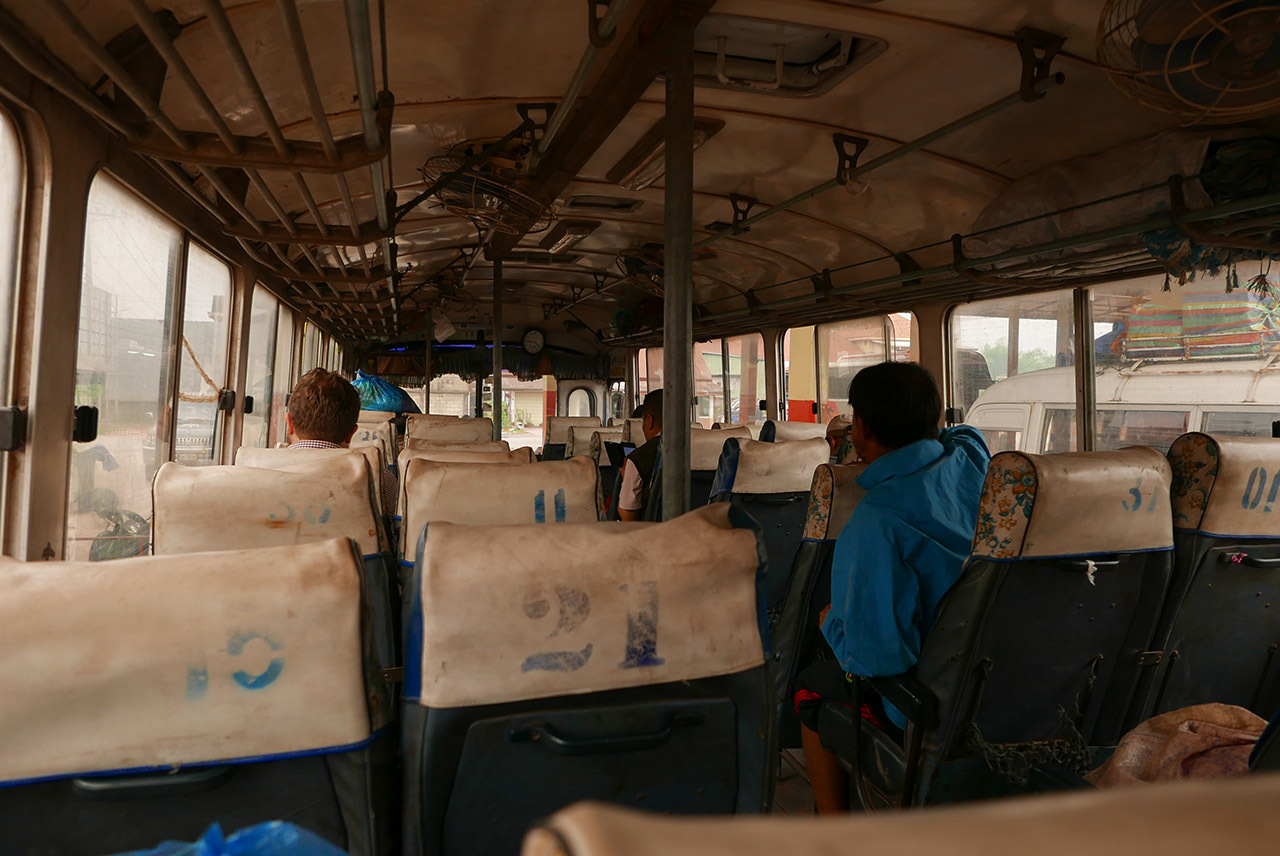
True to the legend, with all the preparations, the bus left one hour late. There were more passengers than seats, and the bus helper put some cracked plastic chairs on the aisle so a few of the extra passengers could sit.
Our first stop was a gas station nearby, followed by a shop with auto parts. The bus helper went in to buy something, and soon after one of the passengers realized he needed something too. We spent almost half an hour there.
As we got going again, many of the passengers fell asleep. I decided to skip the motion sickness pills again in order to stay awake, and took comfort in the breeze coming in through the windows, although it was sometimes peppered with dust clouds.
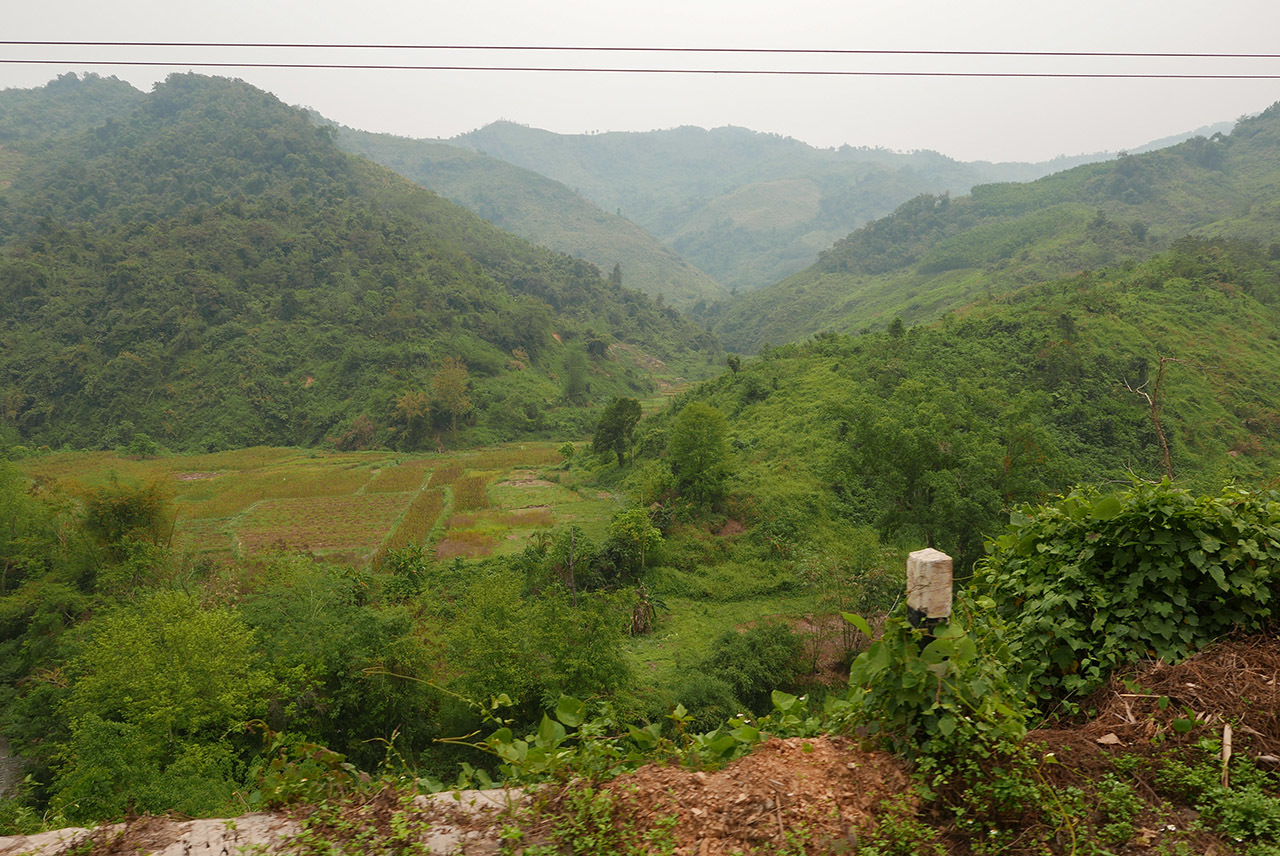
Two hours later we stopped at a bridge where tribal women were selling trinkets. The locals got off the bus to eat, I didn’t move an inch because I didn’t want to lose my seat, and ate a cereal bar and a sponge cake – my first meal that day.
After this stop, a brawny teenager and his friend occupied the two bench seats next to me. I immediately noticed that he was slightly pushing against me. I moved towards the window out of politeness, but he took up the freed-up space and continued pushing. We engaged in this game for a while: he ignored my presence and gestures, I ended up giving up small centimeters of my space to avoid rubbing against one another, and the teenager extended his body over the newly-gained territory. When he ran out of torso width to do this, he started spreading his knees more and more, marking his dominion over our tiny bench with every limb he had. I grew quite concerned that this could be some sort of ploy, and looked around to ask for help, but the other passengers were sleeping. “A bus conspiracy,” I told myself.
But the teenager quickly fell asleep too, which put me at ease. However, he did not give up his territorial ambitions. With his knees spread wide, he was taking up one and a half seats. I stood my ground, quite literally, to prevent him from expanding even more. When I recounted the event to a fellow traveler later on, he quickly labelled it as something completely natural in many cultures. It was not a ploy against me, but the product of a mentality to display manhood and dominance by taking up space at the expense of others. Apparently, even if I had fought back harder, I wouldn’t have had much chance of success.
In the moment, I had my own revenge idea against the sleeping boy who took up space like he was king: I took photos of him and promised my sardined self to post them online for the whole wide world to see. (Yep: ridiculous.)
Thankfully the landscape was more than compensating for these geopolitical micro-disputes: mountain tops covered in dark green jungle, much of it untouched, as far as the eyes could see. The road was steep and winding, and on the upslopes the bus was barely reaching 10km/h. The lush forest was interspersed with deforested or burnt down patches, hellish views that foretold a darker future.
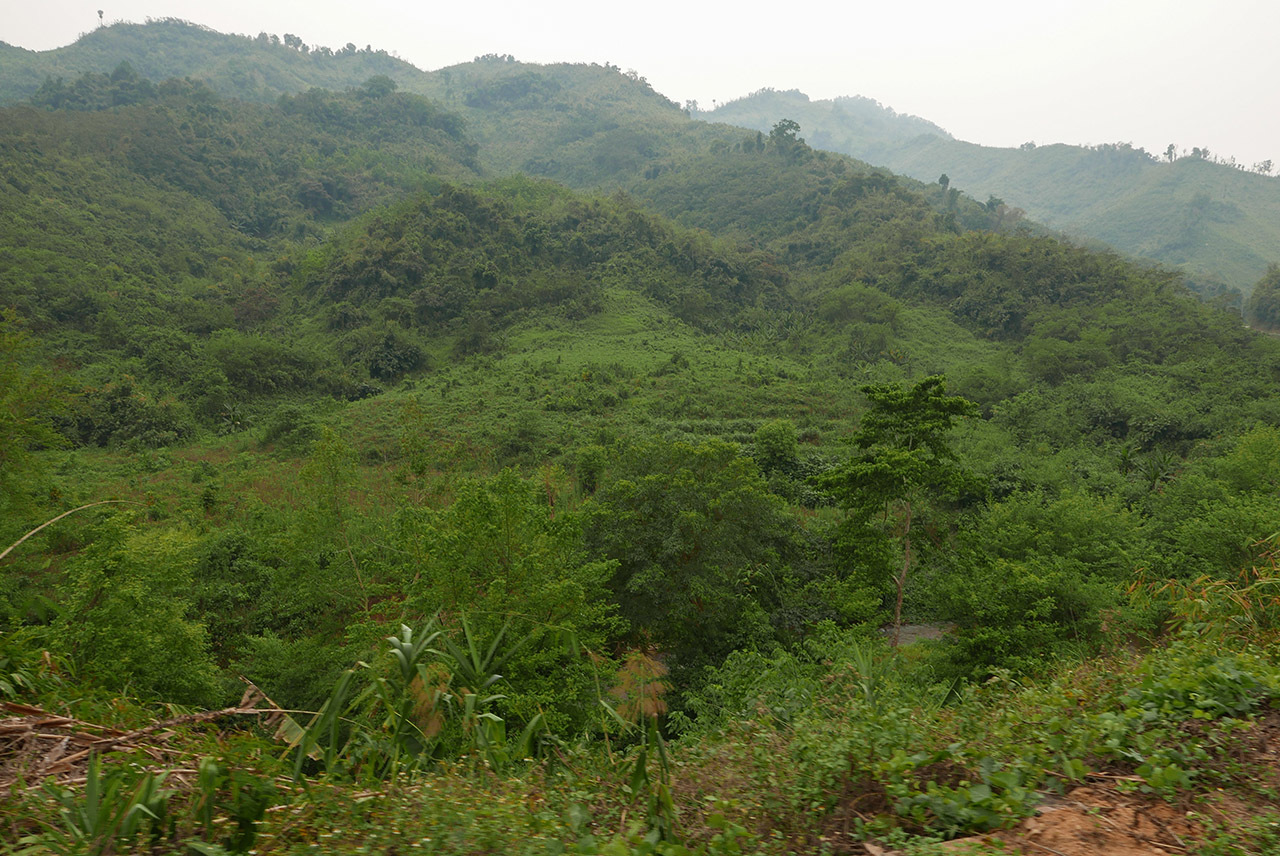
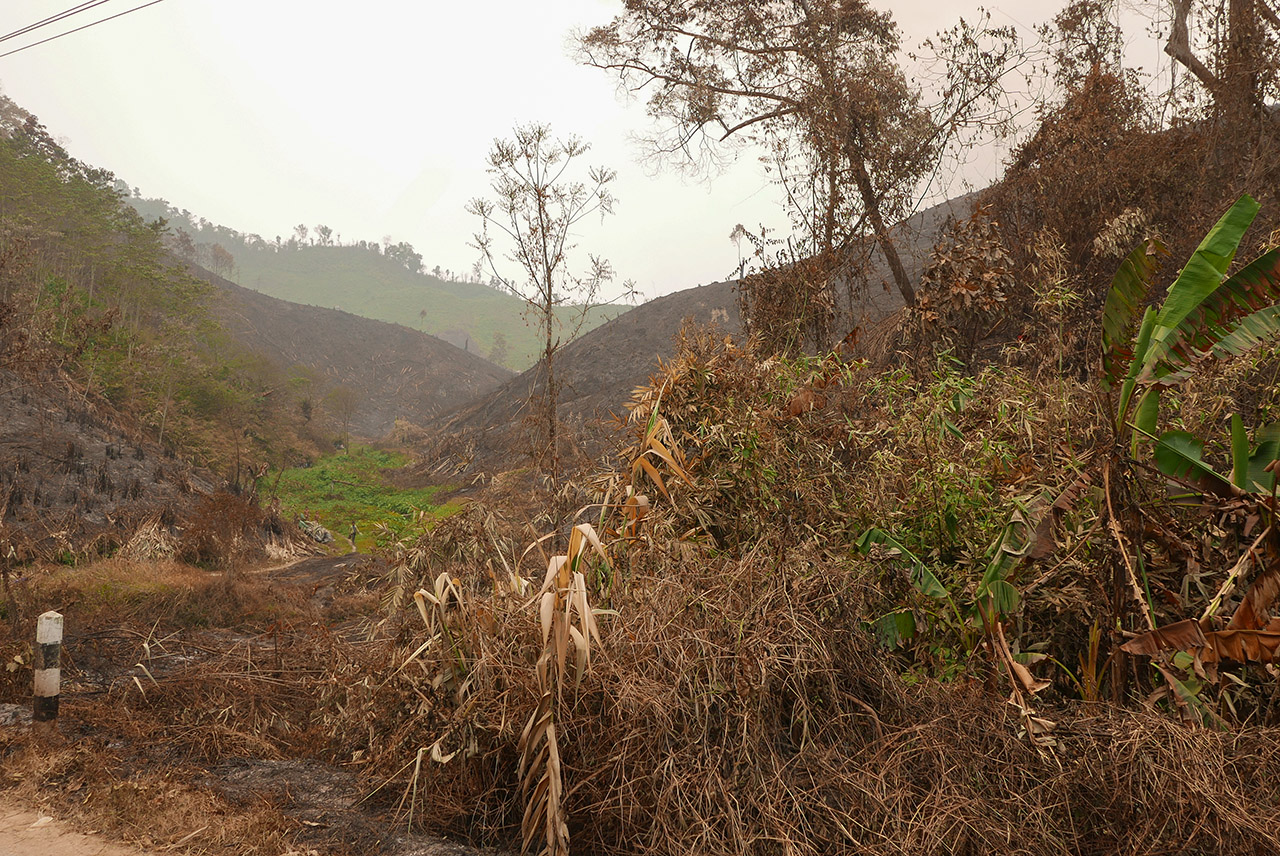
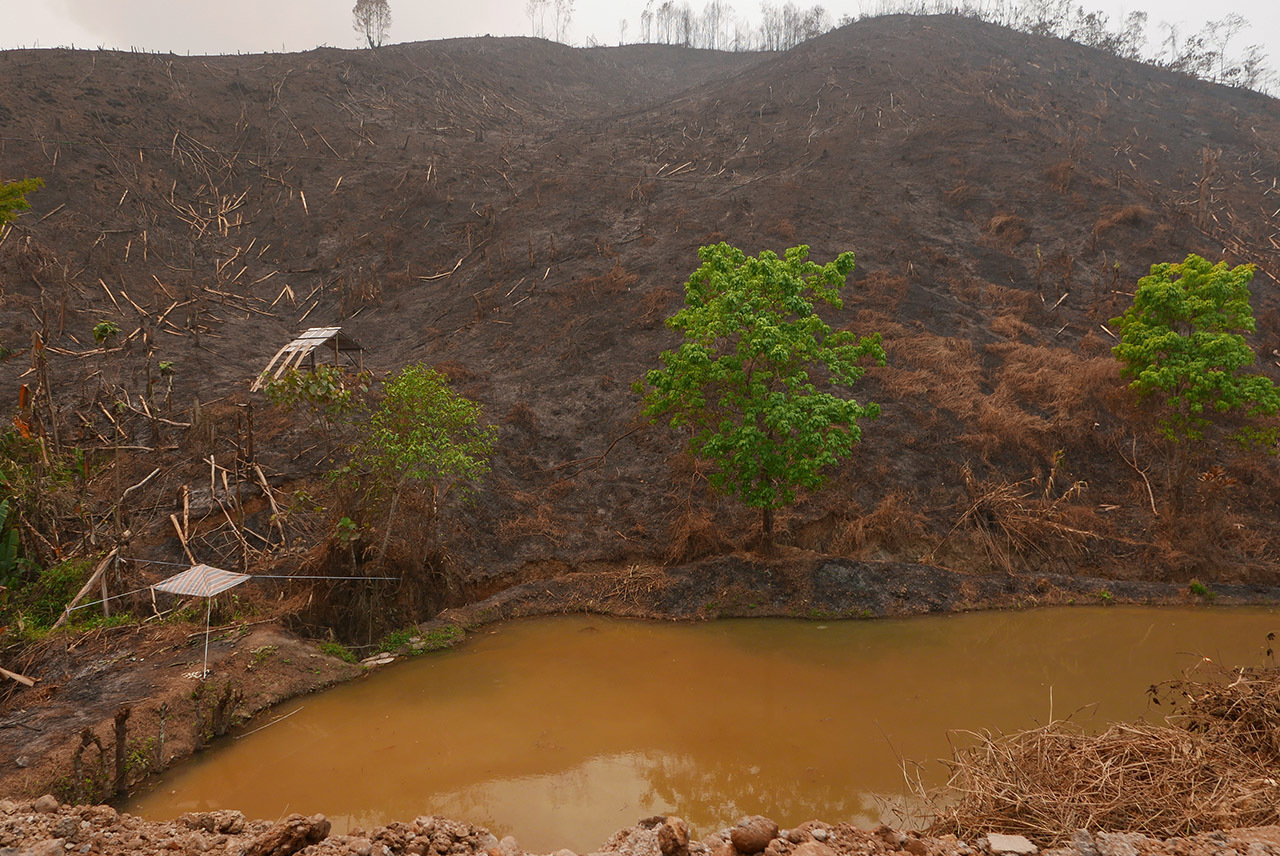
In the early afternoon, just as we were straddling a tiny road bump in a tribal village, the bus battery died. Luckily, we were going slightly downhill, and after ten minutes’ worth of attempts to ignite the engine, the bus finally took off again. The driver had to save battery life and killed the music, so no more Lao pop on the loudspeakers—a great loss for our bus.
To keep myself busy and avoid the lures of sleep, I took photos at every turn. This proved to be useful tactics for a while, until my mind began to drift away and each kilometer started to feel long like a year. The air became sticky and I was getting quite hungry.
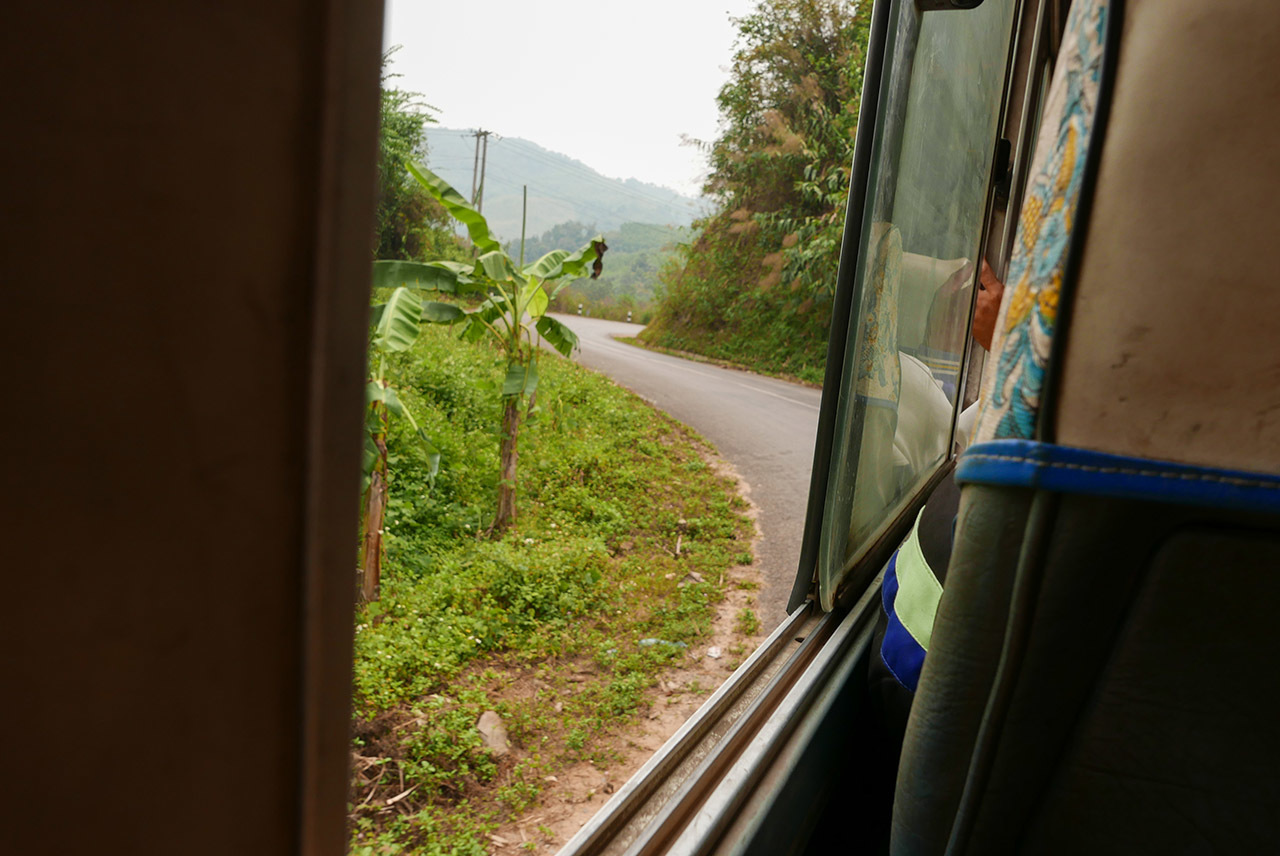
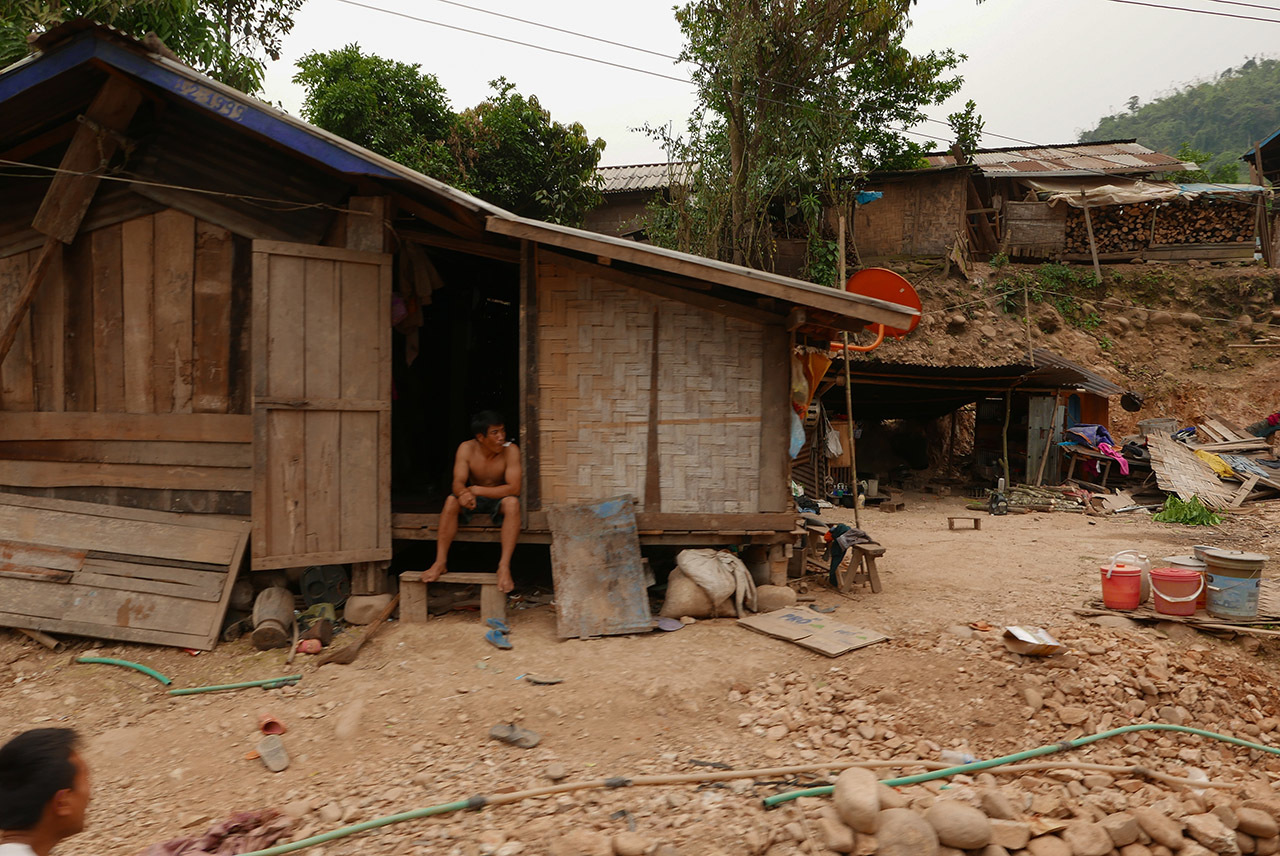
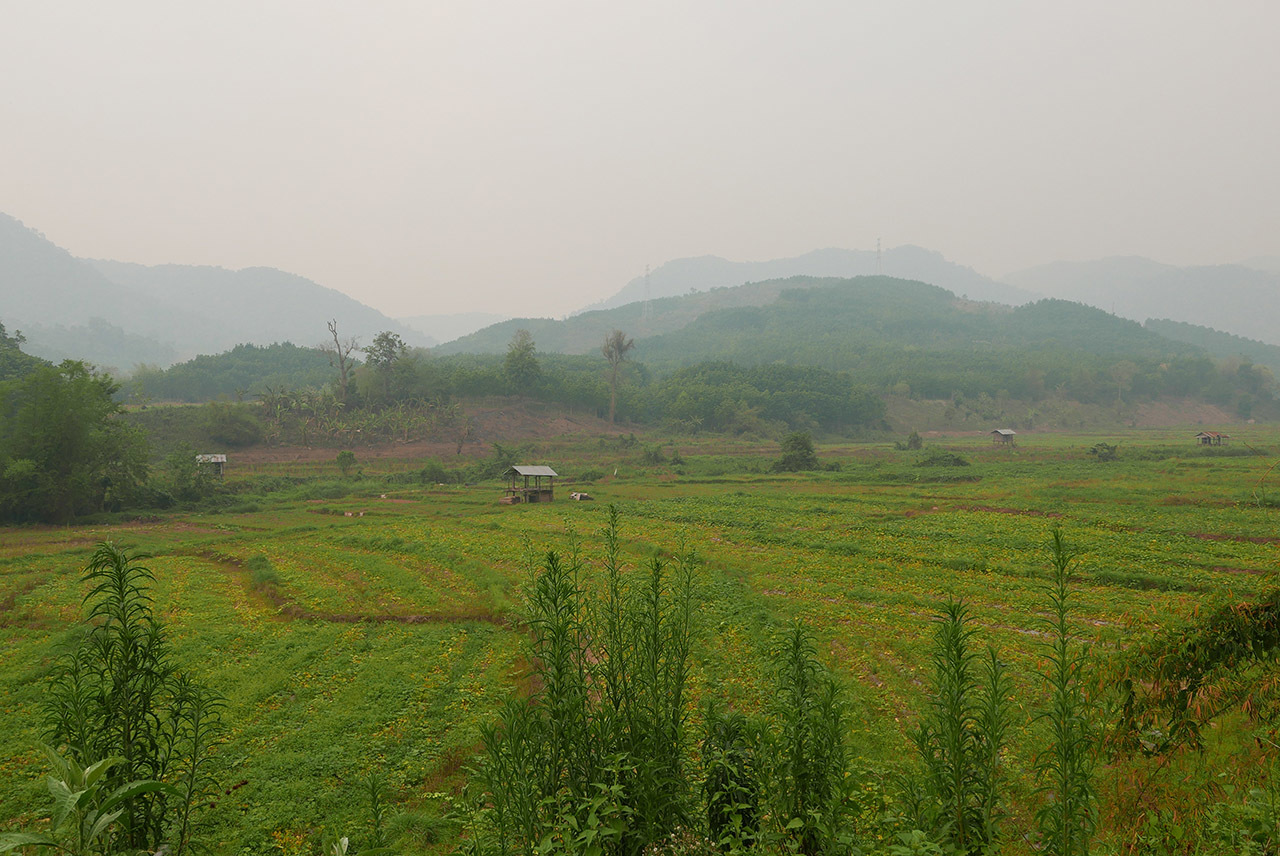
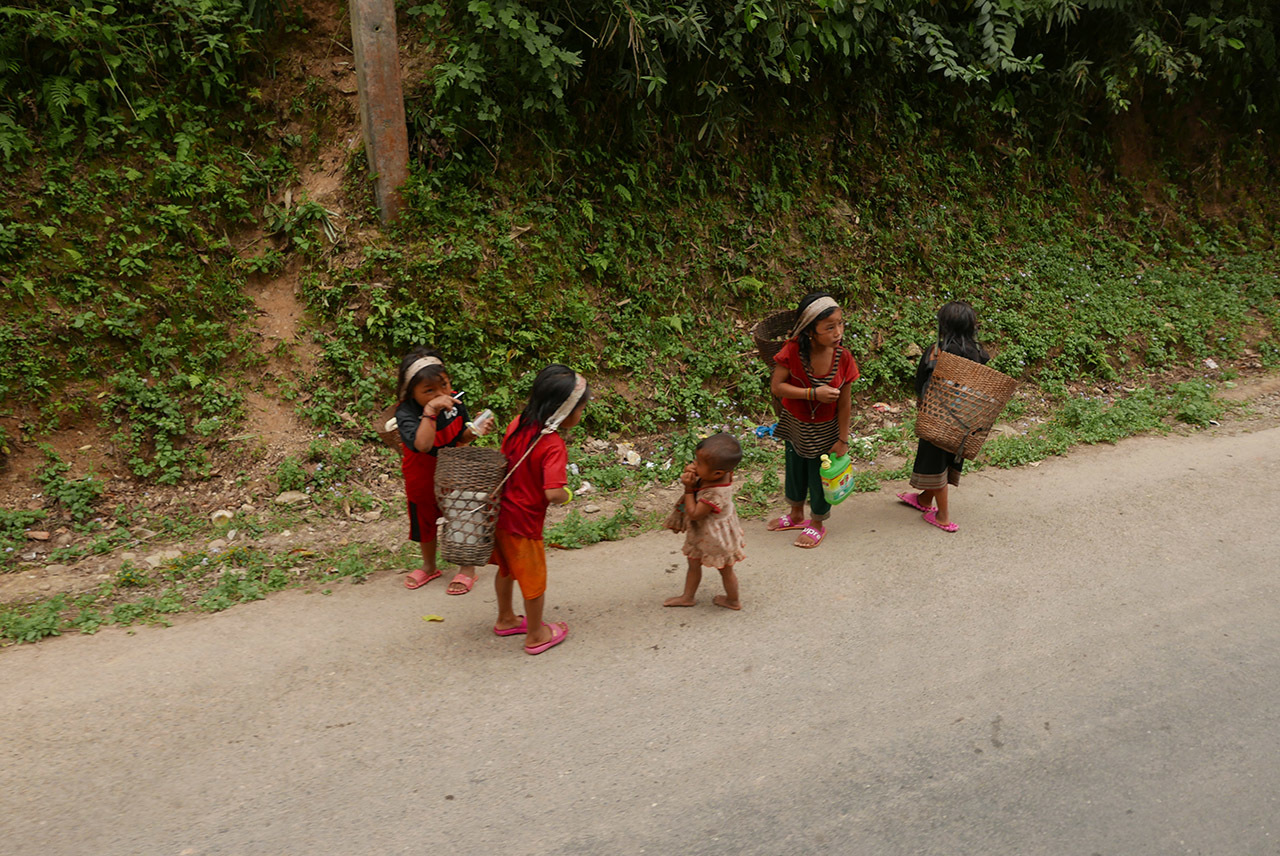
Around 3:30pm a loud hiss signaled a tire explosion. It happened so fast, the driver did not even get to steer back to the right side of the road, and the bus was stranded on the left lane, where it had been at the time. The engine was left running to prevent battery death. People got off the bus and gathered around the repair scene.
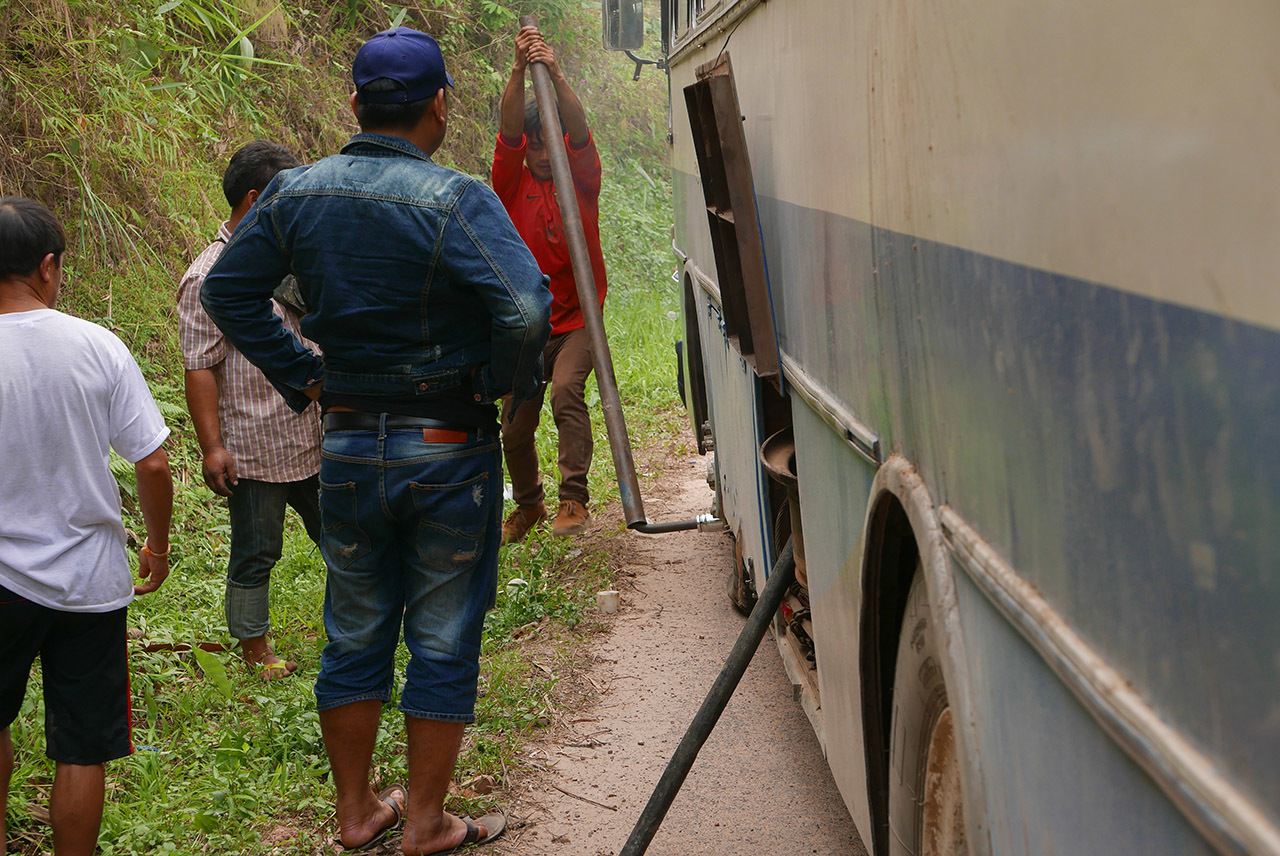
The whole repair process felt very improvised. The helper went back into the bus and took out a long metal rod, empty on the inside, from under the seats, which he used as a wrench to remove the wheel bolts. This took quite a while since it obviously was not the right tool. I noticed another falang, a blond, bearded man with glasses and a checkered shirt, had been on the bus all along; at some point he headed towards me and uttered a brief “Sabaidee!” (Lao hello).
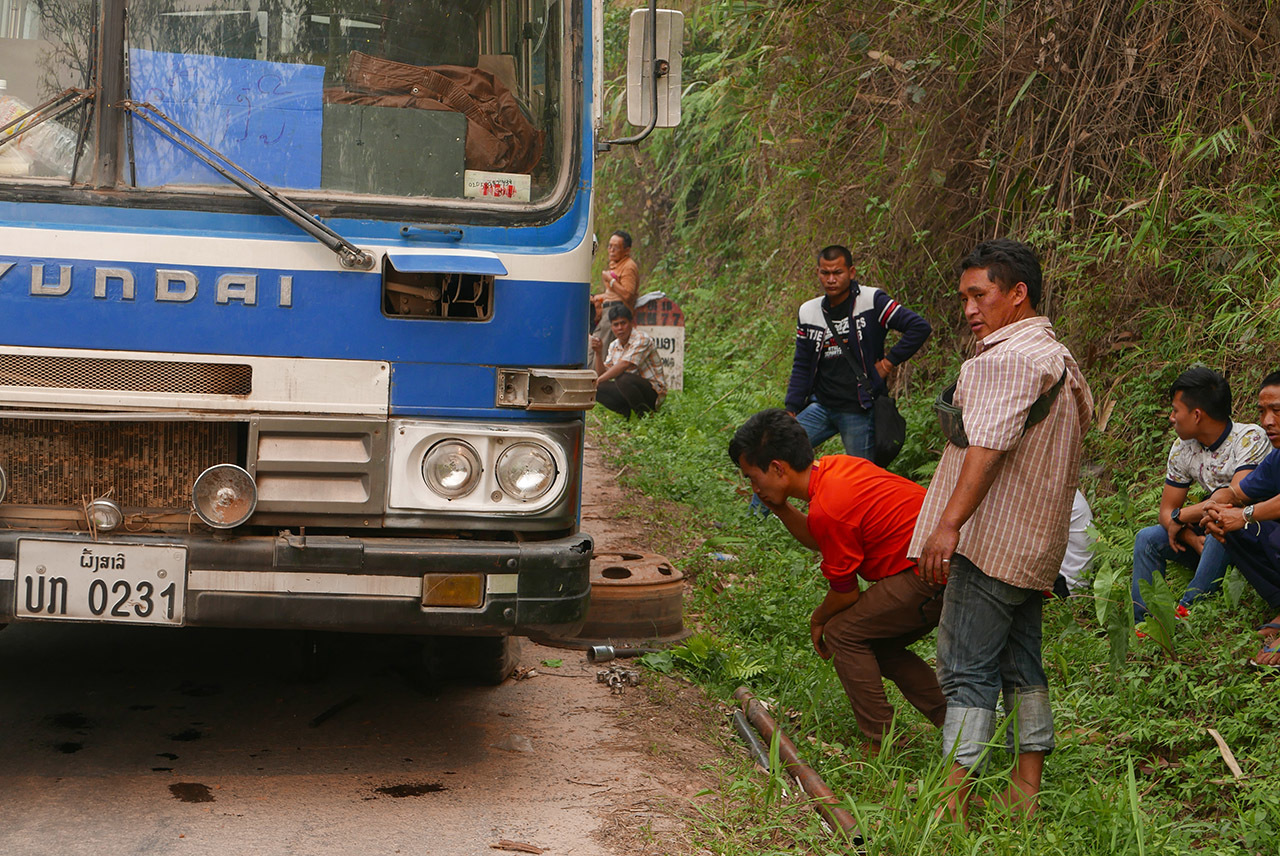
Finally the tire was removed, the driver and his helper caught a ride and went to the next settlement to have it fixed. Us passengers were left there to guard this rumbling vehicle in its hundredth afterlife, occupying the wrong lane.
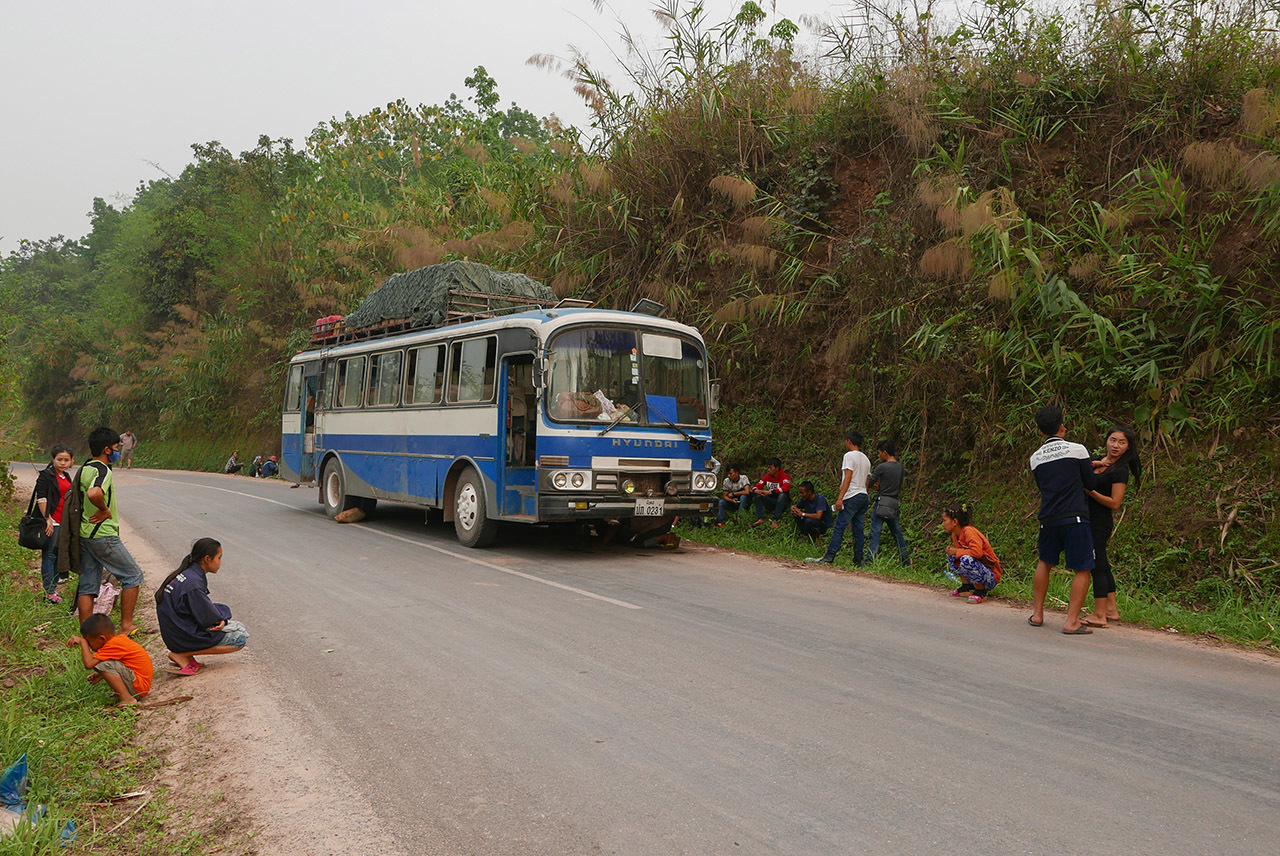
I took a walk to explore the surroundings, but there wasn’t much to see. I ate my few remaining rambutan fruits and wrote in my travel diary to kill time. We were in the middle of an area with short vegetation, it was hot and almost no spots in the shade. A local woman walked up to me, curious to see what I was writing. We talked in monosyllabic English about my trip in Laos.
Forty minutes later, the drivers showed up with the tire. They placed it back on the wheel, and we dashed off after a full 90-minute pit stop.
We hadn’t even driven for five minutes when we reached the next village, and—I kid you not —the driver stopped to take a break. The passengers went to the toilet, had some drinks and snacks. We got going again, and not even one hundred meters later, a woman announced she wanted to get off. But her luggage was all over the bus and she kept remembering more and more items. Some young men on the bus jumped in to help her find all her stuff, a scene that entertained everyone else. The woman assumed a boss-like attitude and gave orders to the young men, talking nonstop. The young men broke out in laughter, and the bus briefly turned into a circus.
When we resumed our journey, I realized we had at least three good hours of driving ahead of us. It was getting dark and I began to worry about ending up in an unknown place after nightfall. I had not even booked accommodation. The bus had a string of blue & green neon lights on the ceiling, and they flickered randomly, almost blinding me once my eyes got used to the pitch black surroundings.
Roughly one hour before Phongsali, at another village stop, I seriously contemplated getting off, after witnessing most of the people do. I was just about to ask the other falang what his plans were, when an old lady in the bus urged me to come closer to her, since we were the only ones left. I made friends hoping I could ask her family to take me to a guesthouse once we’d reached Phongsali. I nervously munched in the dark on my few remaining snacks and experienced a rollercoaster of anxiety and calmness, while lightning flashes started to light up the sky.
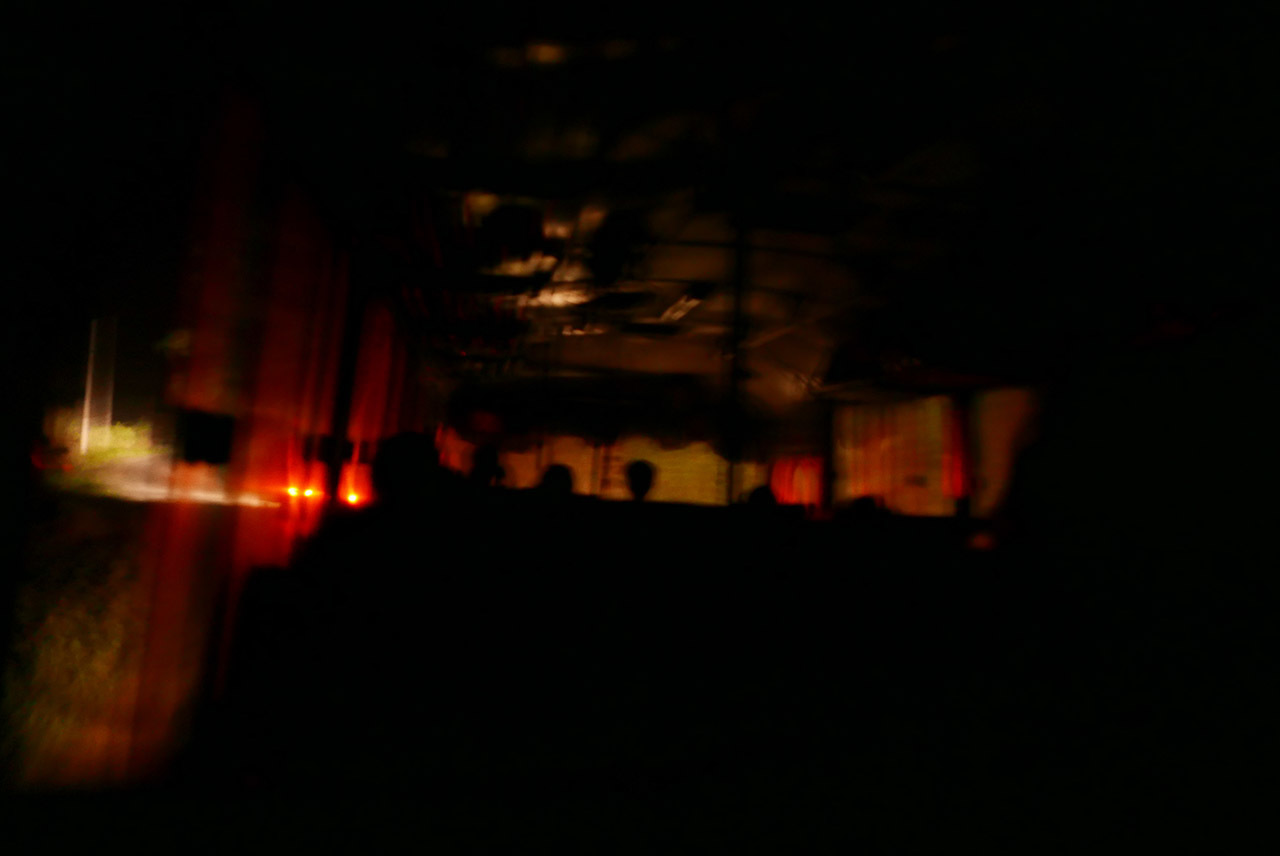
We finally made it to Phongsali when the downpour started. The old lady evaporated just as we got out of the bus, but luckily a tuk tuk driver approached both the other tourist (D.) and me, offering to take us to town for a fair price. In the tuk tuk, D. told me he noticed I hadn’t eaten almost anything the whole day, so he offered me his leftover snack, a crushed Snickers. Snickers is my least favorite chocolate bar, but after a twelve-hour bus ride, it was a godsend.
I told the tuk tuk driver the name of a guesthouse I remembered reading about, and he dropped me right in front of it. The owner’s son immediately spotted me on the veranda. A few words later, I was already in my room, a sparsely furnished, basic space at the back of the house. I ate the Snickers from D., washed all the dust from my clothes and skin, and crashed on the bed, feeling like I was still moving in a vibrating bus.


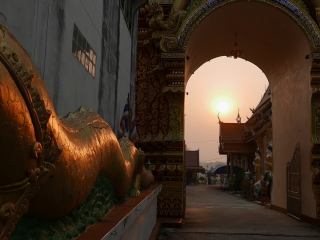
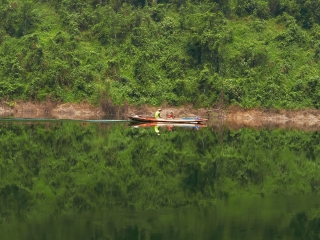
Leave a Reply